Ready to wage a one man war against all the forces of Chaos across the Old World? Whether as a suicidal dwarf slayer, devoted imperial soldier, haughty high elf mage, or quick footed wood elf scout, you’re in for a hack ‘n slashing good time with Warhammer: Chaosbane.
If you read our coverage over the last few months, you probably noticed I was pretty over the moon about this game during the first beta. That excitement has cooled a bit now that I’ve had the chance to play through the whole finished product, but Chaosbane is still an excellent overall addition to any ARPG fan’s collection.
With Diablo going the freemium mobile route (ugh, don’t even get me started), this is probably the best fantasy action title we’re going to get this year, and that’s quite a triumph for a Games Workshop title from a developer who has never made an ARPG before.
Yeah… But WHICH Warhammer?
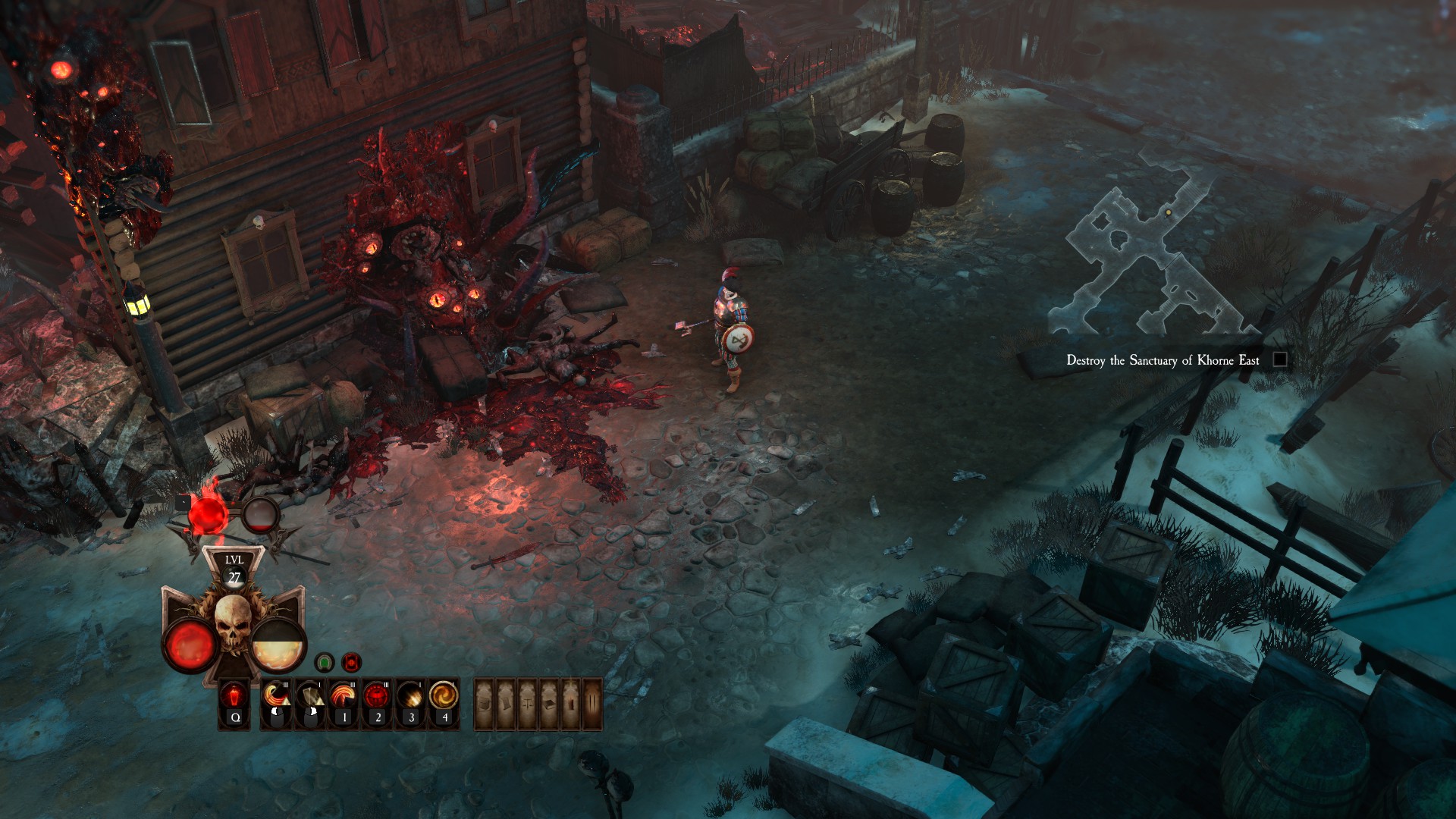 Gotta say, I love what Khorne has done redecorating Praag!
Gotta say, I love what Khorne has done redecorating Praag!
So, there’s one big element we’ve got to cover before jumping into the gameplay that fans of the Warhammer line will need to know about.
If you aren’t familiar with what’s been happening in the tabletop world recently, for whatever reason Games Workshop decided to blow up the existing Warhammer universe and replace it with Age Of Sigmar, which has divided the fans.
Sort of like how Wizards Of The Coast decided to annihilate Forgotten Realms and radically change it up to match with the D&D 4th edition rules a decade back, Age Of Sigmar is a very different beast from the standard Warhammer fantasy setting.
There’s lots of player speculation as to why they went this route, like Warhammer 40K selling better than its fantasy counterpart — and I’ll admit the new Age Of Sigmar models sure do look a lot more like space marines than knights.
You needn’t worry about those changes, however, as Chaosbane doesn’t do away with the standard Old World setting or replace it with the various Realms from Age Of Sigmar.
Instead, this one actually goes back in time, taking place a few hundred years before the End Times content from games like Vermintide and far away from the Age Of Sigmar update.
Everything you know and love from Warhammer is still here, from witch hunters to champion and standard bearer units. Whichever hero you pick, you’ll be carving a swathe of destruction through classic Chaos enemies like nurglings beneath the streets of Nuln, Khorne’s dreaded flesh hounds in Praag, and daemonettes of Slaanesh in frozen Norsca.
Unexpected Limitations, And Some Nifty Additions
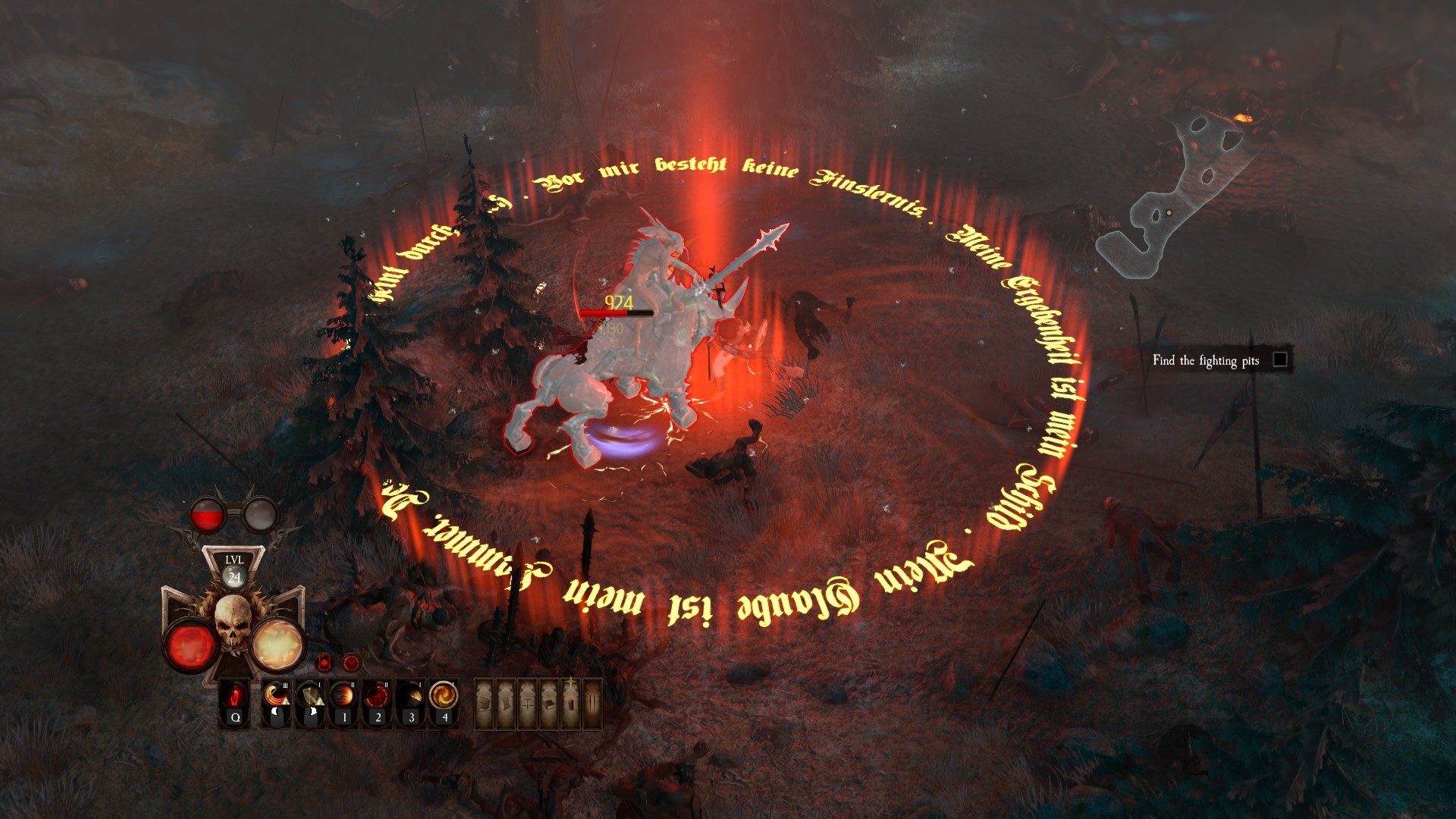 This guy stampeding out of nowhere will delight Warhammer Fantasy fans.
This guy stampeding out of nowhere will delight Warhammer Fantasy fans.
With that out of the way, let’s jump into what you can expect from Warhammer going the Diablo route in Chaosbane. If you’ve played any ARPG before, you know the basics of what to expect, but there is an issue with the full game that wasn’t apparent just by playing a single act in the previous beta.
A number of limitations and shortcuts have clearly been implemented here, staring with how some of the enemies from different Chaos factions are very, very similar to one another.
The mini bosses in Nuln and Praag for instance are nearly identical, exploding in the same way after death or just swapping out fire ring ground attacks for poison ring ground attacks. On the same note, if you’ve killed one Chaos cultist, you’ve killed ’em all, and the sound effects between minions of Nurgle and minions of Khorne are eerily similar.
On the plus side, some of creature types are much more distinct between factions, like the skull master riding a metallic flesh hound and knocking you down with charge attacks.
For any enemy you come across, the animations are also absolutely killer. From nurglings gathering together to form a disgusting swarm to the giant gut of the Great Unclean One doing terrible, awful things during the first boss battle, I was consistently impressed with the visual flair on display.
On the character creation front is where you’ll find the biggest problem ARPG fanatics are going to have with the game — there are only four classes, and no customization options of any kind in terms of appearance, gender, or dual classing.
That’s a limitation that won’t sit will with people used to half a dozen base classes and dozens of possible build combinations. While you can customize your skills, the base gameplay for each class is set in stone. The soldier wields one weapon and a shield, the high elf mage wields a magic implement and a sword, the dwarf slayer dual wields, and the wood elf uses ranged weapons and traps without variation.
The addition of local couch co-op will likely make up for that limitation for the console crowd, although solo players on PC may be less enamored with the lack of options. Sadly, there’s been no talk of an extra class getting added with future updates, although with any luck that may be rethought as players call for additional character types.
There’s another issue here that may be a sticking point for some gamers who prefer a little more variety in the combat. Simply put, all weapons essentially handle the same, while the differences show up in what attack skill you are using for energy regeneration.
For example with the soldier class, a warhammer, mace, or sword all swing at the same rate and have the same radius while using the same attack skill. How basic weapon attacks change is in swapping out those skills, as some are slower, have different ranges, or offer defensive buffs in addition to dealing damage.
With the soldier for instance, you can use Slash as your main attack — no matter which type of weapon is equipped — for quick, damaging strikes that slow the enemy. For the more defensive-minded, you might want to switch to Incisive Breakthrough instead, which is slower but reduces your damage while you are swinging.
As a final mention of the limitations you might not expect, keep in mind that this game is all about the combat. There aren’t any lore books to pick up and learn about the world like in Grim Dawn, and you can’t strike up conversations with anyone in the various encampments unless they are about to give you a quest.
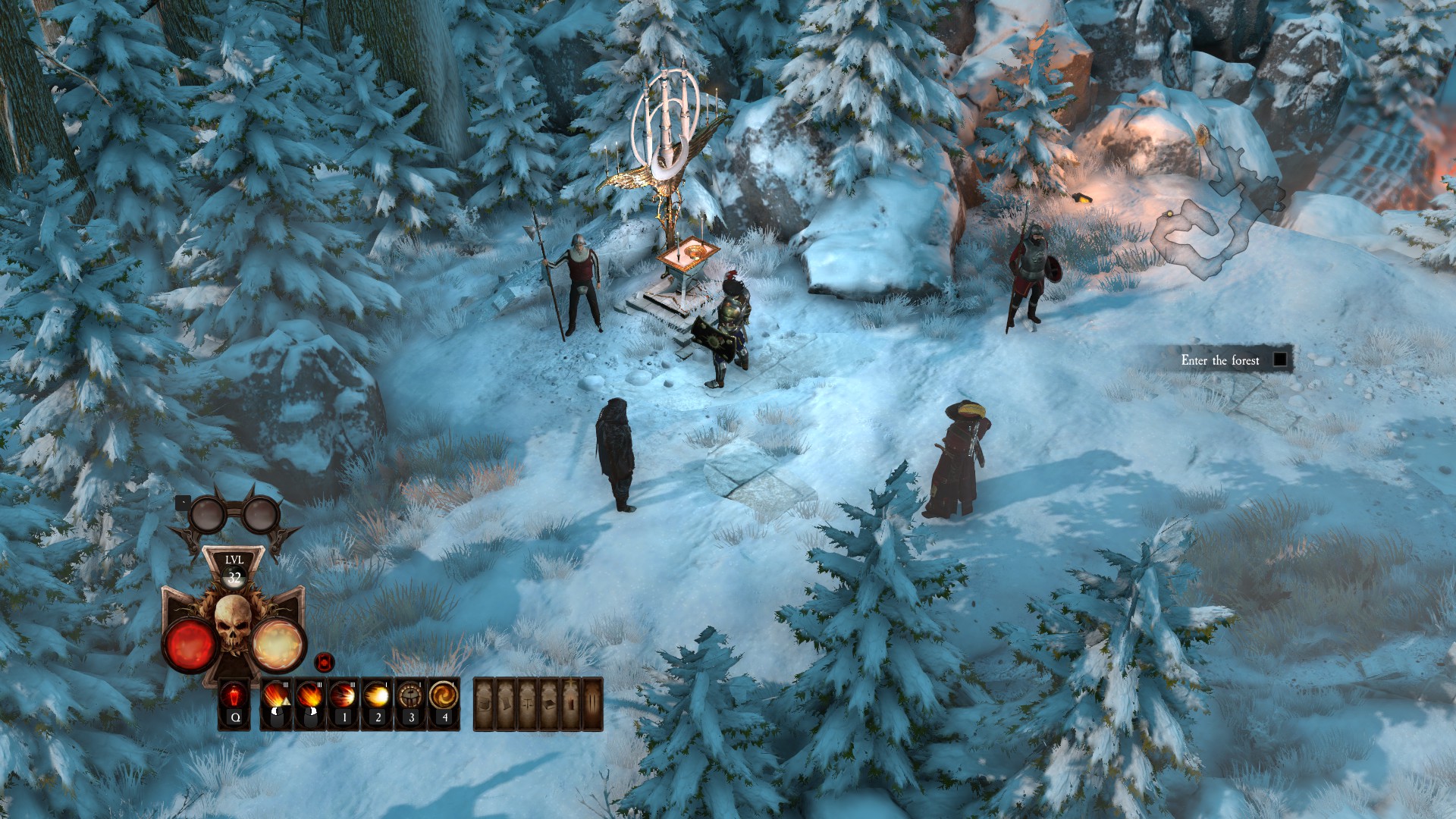 In the grim Old World, people aren’t super chatty
In the grim Old World, people aren’t super chatty
On that front, the main storyline isn’t particularly long, but there’s significant replayability in Boss Rush, Expedition, and Relic Hunt modes. Those modes add in different elements, like health dropping if you remain stationary in Relic Hunt or randomized events on Expeditions to get better loot and experience gains.
There’s another reason why the main campaign isn’t as long as you might expect compared to other games like Torchlight 2 or Grim Dawn, and that’s the whopping 10 (Yes, 10!) difficulty levels to try out for a real challenge. “Very Hard” isn’t kidding either — and that’s only the fifth difficulty level! I don’t even want to think about what must be going for the ultimate challenge with Chaos 5 mode.
Its also worth noting that the main campaign has a bit more than just the standard rinse and repeat of the ARPG genre as you smash through another horde of enemies. The missions are a little more varied, featuring additions like timed levels where you are fighting against the clock to catch a fleeing cultist or save a bunch of soldiers before they can be scarified.
The Skill Difference
The one big difference between Chaosbane and any other Diablo style game is in how skills are handled. Each class skill tree is static, meaning you don’t get to choose which skills are unlocked at which level. Instead, they unlock automatically at predefined levels.
On the opposite side, the God skill tree is yours to traverse as you see fit to gain passive bonuses and acquire new skills. Unlocking nodes on that tree requires finding fragments and earning blessings, and which route of the tree you take will significantly change up your skill options.
Here’s the big change — you can have a combination of 12 different skills at any one time, but each skill requires a certain number of points to equip. That means you tailor your play style based on whether you want a super upgraded Slash for instance, or a bunch of less powerful skills like banners for reducing damage or extra attack types for generating more energy.
What’s revolutionary on that front is that any player can respec their character build on the fly at absolutely any time. You don’t need to use an item and you don’t need to meet a specific NPC in town. Tired of your current skill set? Cool, swap it out with completely different ones and try playing another way — there’s nothing stopping you.
That ability to make changes becomes absolutely necessary for anyone playing through in single player rather that online or with local co-op. After breezing through most of the first two acts on normal, my empire soldier was repeatedly annihilated by the Bloodthirster of Khorne boss. After a couple of fruitless attempts, I only managed to kill the greater daemon by swapping out my skills to be more defensive.
The Bottom Line
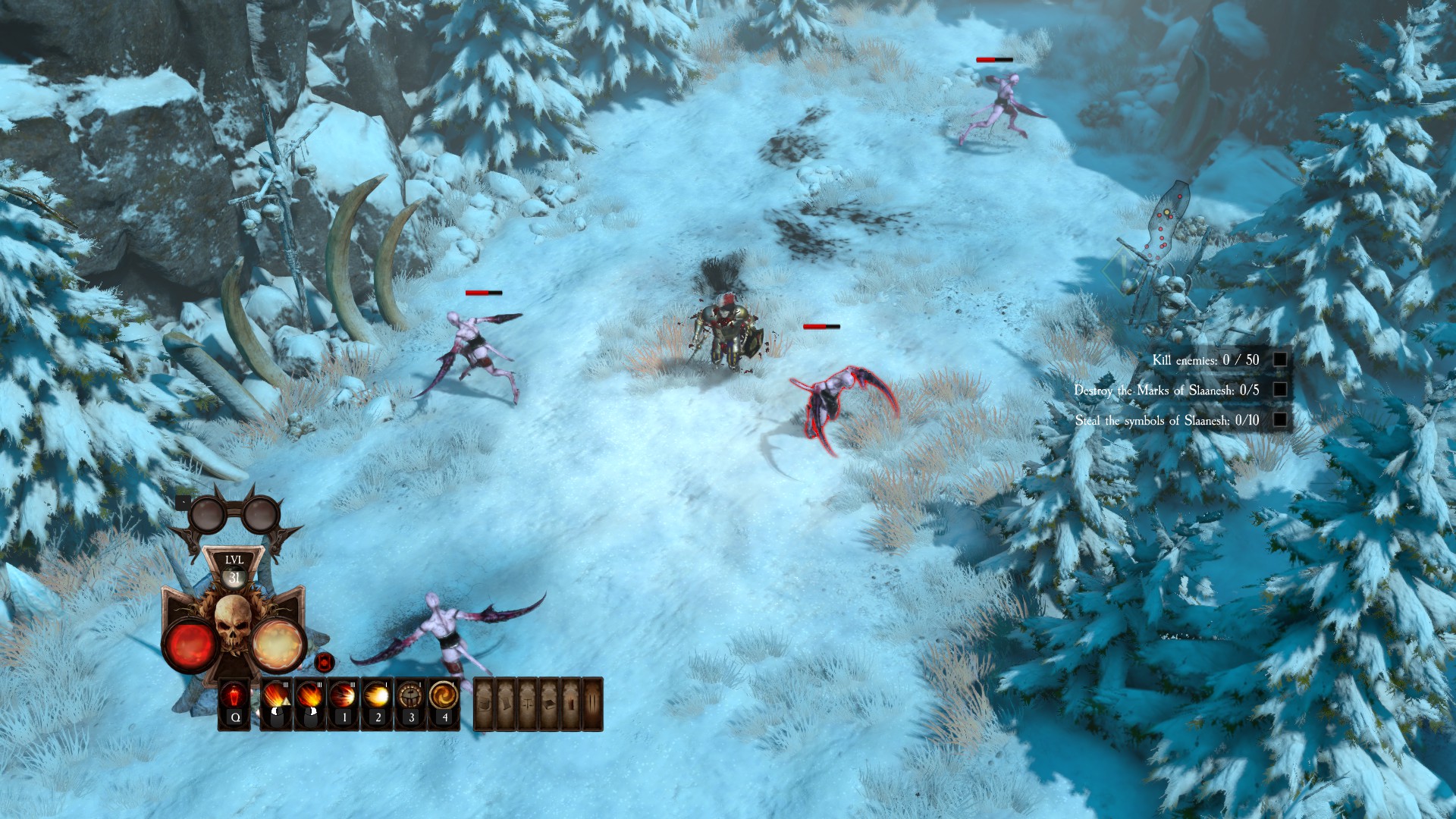 I’ve come to chew bubblegum and slaughter Slaanesh cults… and I’m all out of bubblegum
I’ve come to chew bubblegum and slaughter Slaanesh cults… and I’m all out of bubblegum
Pros:
- Warhammer works surprisingly well in the ARPG genre
- With 10 difficulty tiers, you won’t run out of hack ‘n slash adventure anytime soon
- The daemon animations are simply stunning
Cons:
- Very limited class selection
- No real ability to customize your character, and the equipment types don’t have nearly the broad range as other ARPGs
- Fairly short main campaign, and some of the enemy types are clearly recycled
Admittedly, there are quite a few ways in which you can tell this is a game from a lesser known developer that isn’t experienced in the ARPG style. That being said, Eko Software has still managed to put out a really solid game that will easily hook hack ‘n slash fans.
If you’ve already played Grim Dawn into the ground and aren’t interested in what’s happening with the new Diablo and Torchlight games, Chaosbane will easily offer you dozens of hours of daemon killing fun either solo or co-op.

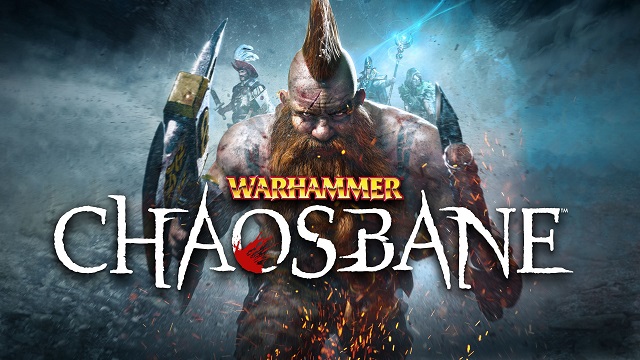
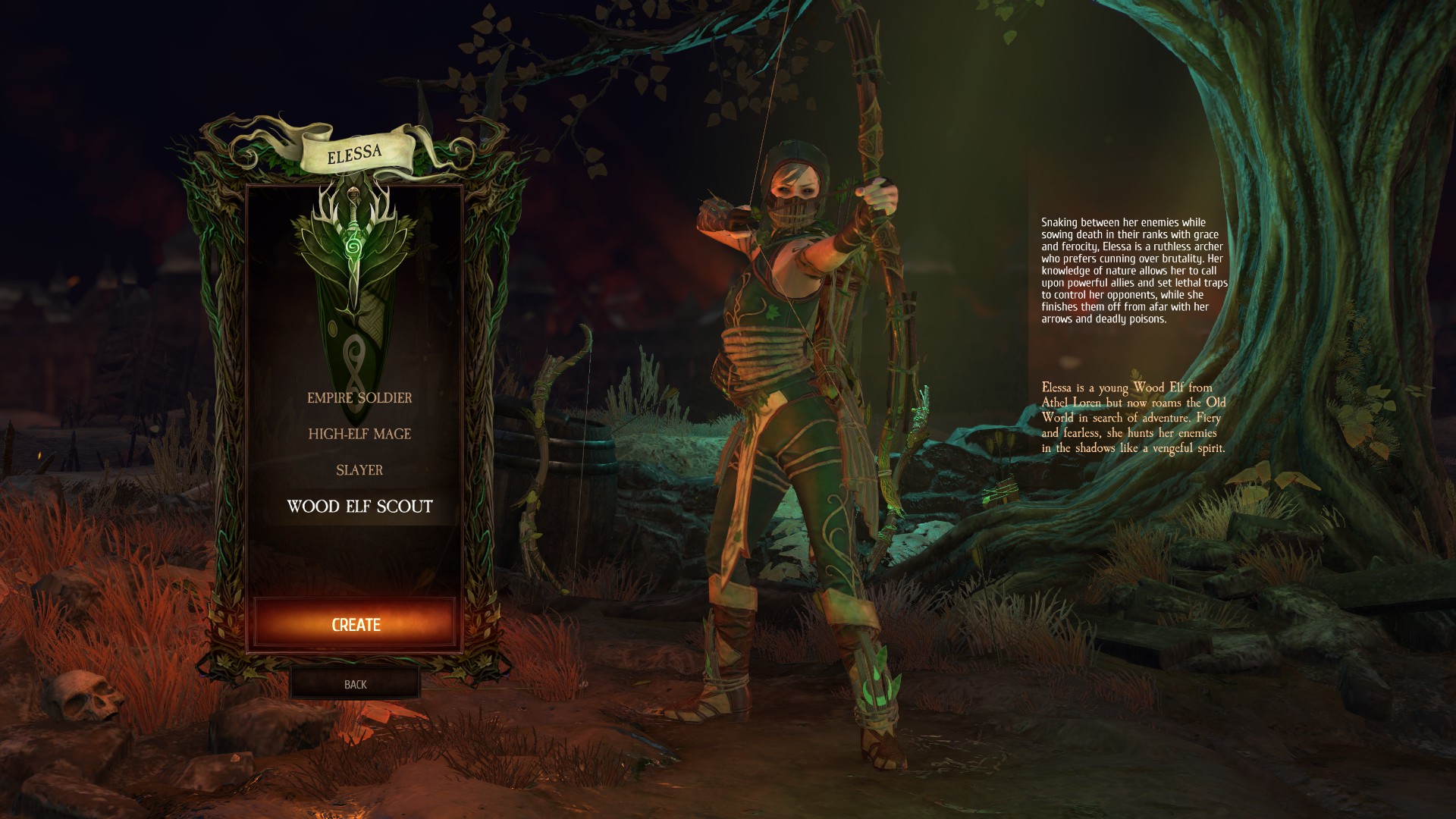
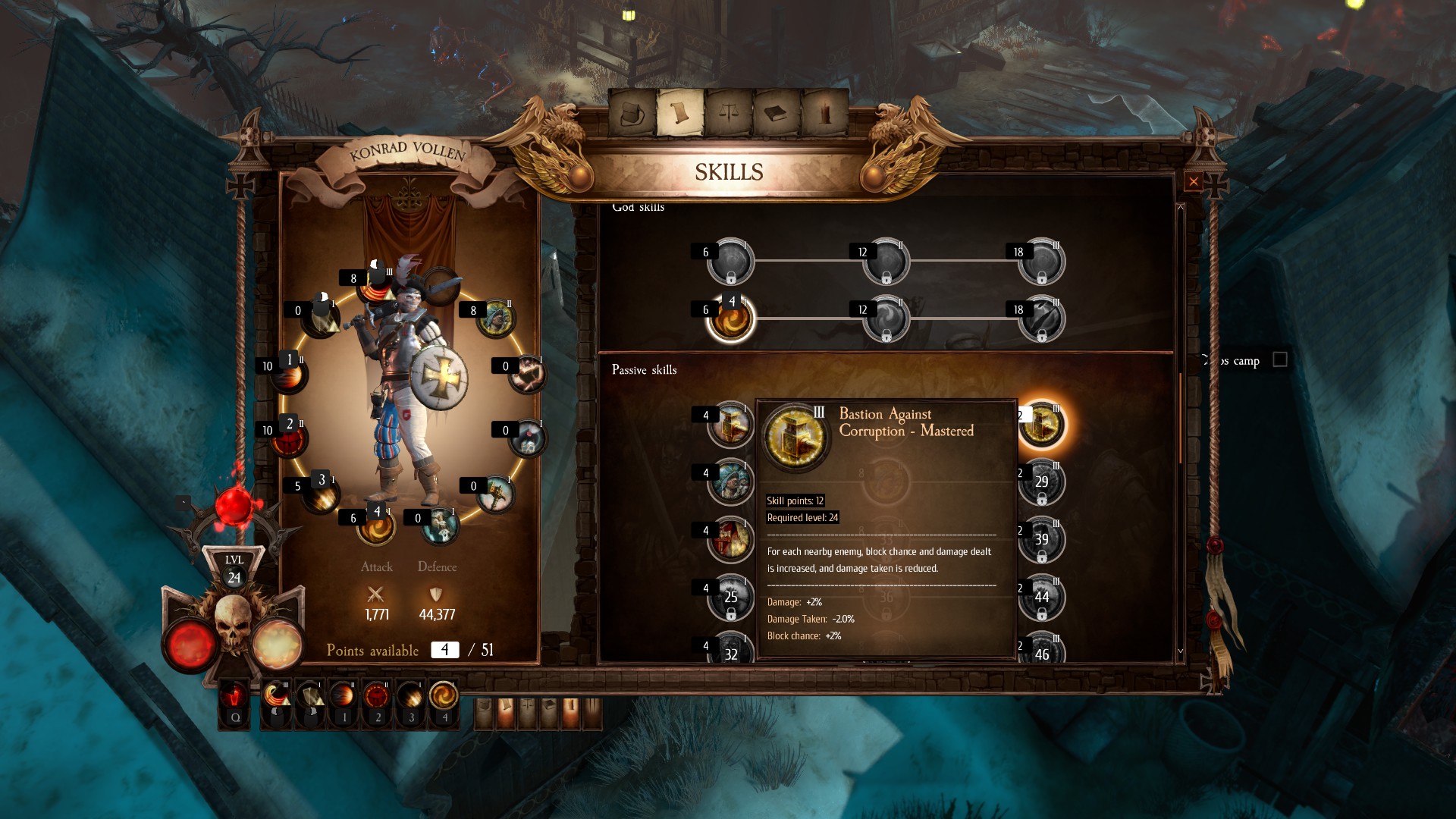
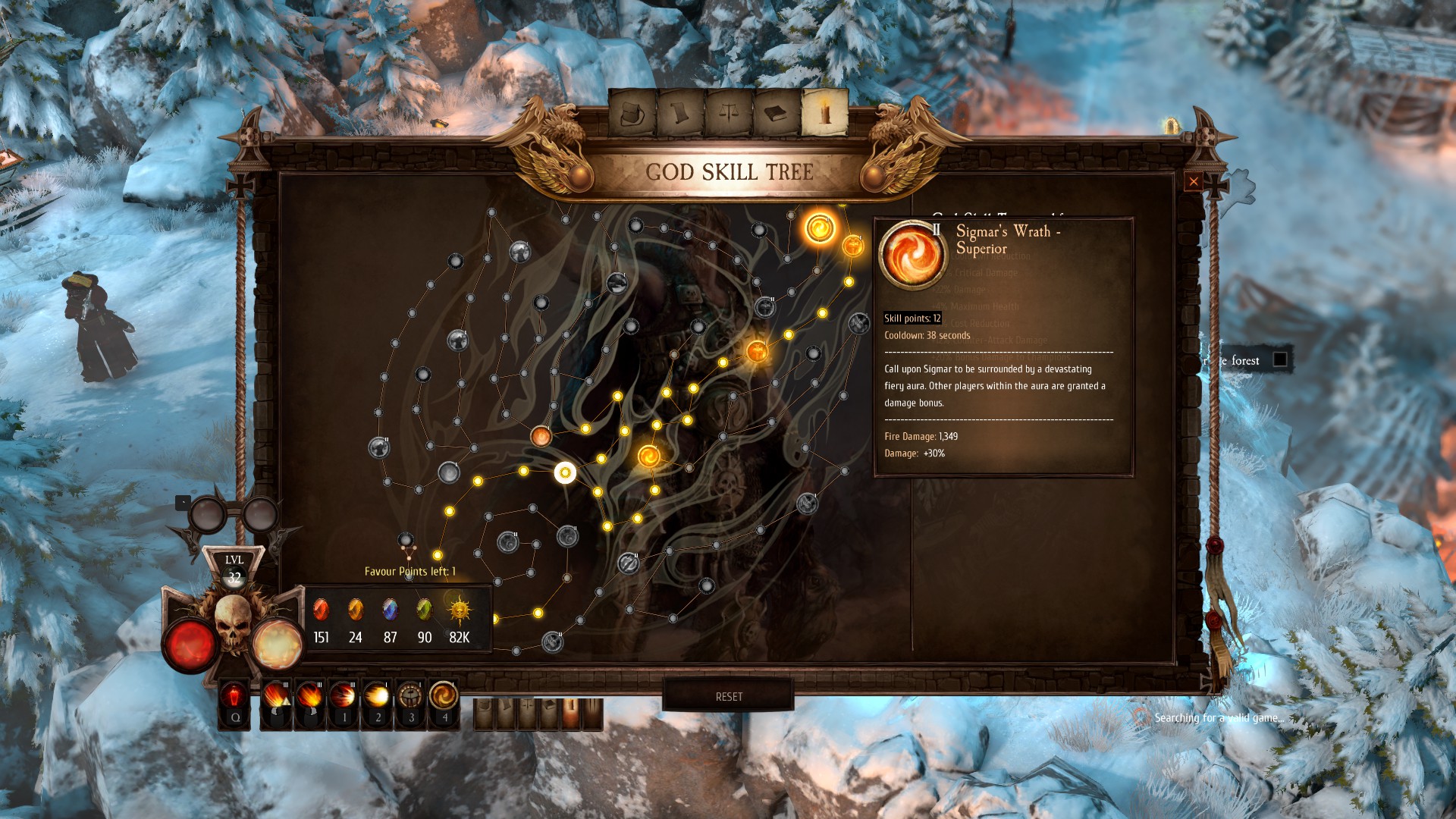
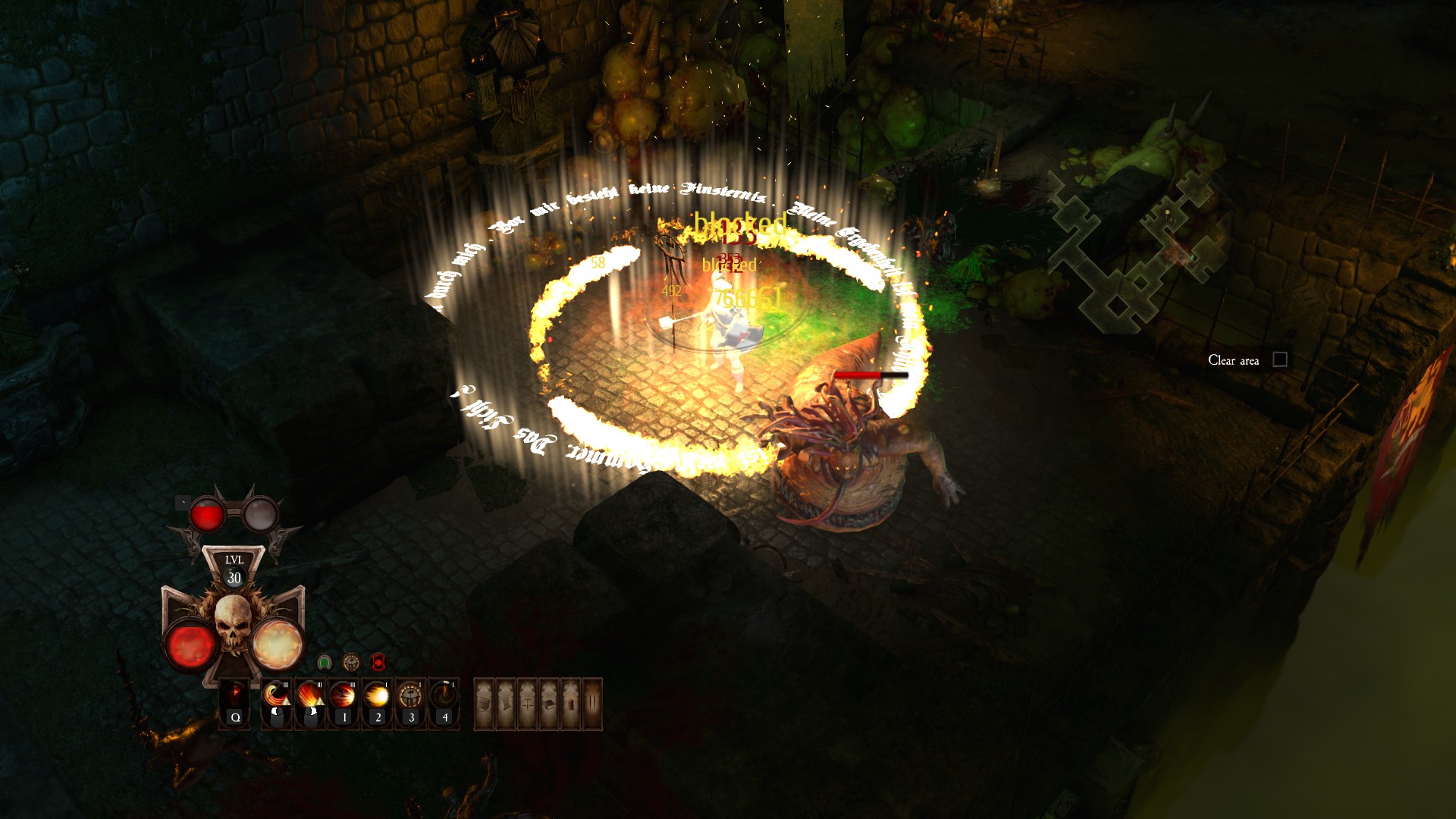





Published: May 27, 2019 06:46 pm